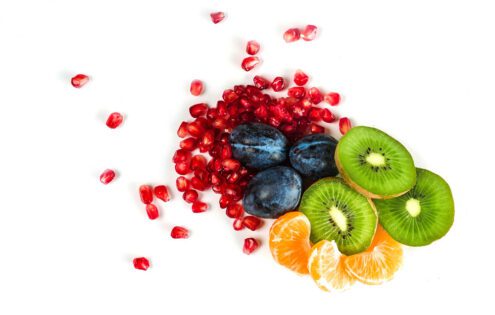How to Source Bulk Ingredients Without the Headache

Sourcing ingredients in bulk isn’t just about placing large orders; it’s about precision, strategy, and staying ahead of the ever-shifting landscape of global supply. Whether you’re producing a line of health snacks, ready-to-drink beverages, or plant-based meals, your ingredient sourcing process directly impacts your product’s quality, safety, price point, and long-term viability. Done poorly, sourcing bulk ingredients can lead to production delays, compliance issues, and more. Done well, it can simplify your operations and boost your brand’s reputation. Here’s how to source ingredients at scale, without the headaches.
Sourcing Ingredients at Scale
Sourcing ingredients at scale refers to the process of procuring large volumes of raw materials (often across multiple regions or suppliers) for consistent, high-volume production. It involves aligning ingredient functionality, cost, quality, and logistics to support steady output, whether you’re manufacturing thousands or millions of units. Unlike small-batch sourcing, which may be more flexible or artisanal, sourcing at scale demands standardization, risk management, and a deep understanding of the global supply chain.
Scaling up from small-batch to mass production requires a fundamental shift in how ingredients are sourced. To do it right, you need more than a shopping list; you need to understand why you’re sourcing an ingredient, how it functions in your product, and where to find the right supplier. Start by clearly defining the ingredient’s application. What role does it play in your formulation? For example, is it a functional ingredient, a flavor driver, or a texture enhancer? Next, outline the technical requirements: purity, grade, shelf stability, organic or non-GMO status, etc. Not all suppliers will meet every specification, and what works in one region or batch may not be available the next. Staying informed about the regions where your ingredients are grown or processed is critical. Climate shifts, political instability, and regulatory changes can all influence the availability and reliability of supply.
To source effectively at scale, consider the following factors early in your procurement process:
- Ingredient functionality: Understand how the ingredient behaves under different processing conditions (heat, pressure, mixing, etc.).
- Certifications and standards: Determine which certifications are essential (e.g., USDA Organic, Fair Trade, Non-GMO Project) and confirm supplier compliance.
- Minimum order quantities (MOQs): Large-scale production requires predictable volumes. Make sure your supplier can meet your quantity needs without delay.
- Geographic risk: Evaluate the stability of the region your ingredient comes from. Political unrest, tariffs, or environmental challenges can halt supply.
- Lead times: How long does it take from order to delivery? Consider global shipping timelines and any seasonal impacts on availability.
- Storage and shelf life: Know the shelf life of your ingredient and how it should be stored. Inadequate storage can degrade quality before production even begins.
- Scalability: Can this supplier scale with you as your business grows, or will you need to find a new one once you hit a certain production volume?
Addressing these points early sets a solid foundation for sustainable, headache-free sourcing as your operations scale.
Typical Food Manufacturer Challenges
The food manufacturing industry plays an essential role in both local and global economies, but it comes with a unique set of challenges. From maintaining ingredient quality to navigating an increasingly fragile supply chain, here are some of the biggest obstacles manufacturers face when sourcing bulk ingredients:
1. Quality Control
For any ingestible product, ingredient quality is non-negotiable. A lapse in quality assurance can result in more than just an off-tasting product; it can trigger health concerns, legal liability, and long-term damage to your brand. This is why certifications are a vital layer of protection. When evaluating suppliers, examine who certifies their production and how frequently testing occurs. A robust timeline includes testing at multiple stages: raw materials, blended product, and packaged product. Frequent, end-stage testing offers greater assurance and can help you avoid a recall disaster that could set your business back years.
2. Food Safety
The Centers for Disease Control and Prevention (CDC) estimates that foodborne illnesses affect 48 million Americans annually, leading to over 100,000 hospitalizations and thousands of deaths. Food safety isn’t just a legal requirement; it’s a moral obligation. Manufacturers must ensure that every ingredient sourced meets safety standards, is properly stored and transported, and maintains traceability through the supply chain. As international supply chains grow more complex, the risk of contamination increases. A contaminated batch from overseas could affect thousands of units before the issue is discovered.
3. Supply Chain Disruptions
Ingredient availability and lead times are increasingly unpredictable. External variables (from pandemics and wars to weather-related crop failures) make it difficult to rely on a single supplier or region. It’s essential to factor in “buffer time” for potential delays, particularly for ingredients coming from overseas. Assess whether a supplier has multiple facilities or just one vulnerable plant. Ask what contingency plans are in place in case of a shutdown. A single point of failure can stall your production for weeks.
Evaluating international vs. local suppliers is also key. While international sourcing might offer a better price or unique ingredients, high tariffs, shipping delays, and environmental costs may outweigh the benefits. Local suppliers can offer faster turnaround and less risk. It’s all about balance and risk assessment.
4. Price
While cost is always a factor, it should never be the only factor. Sourcing an ingredient at a low price means little if it compromises quality, consistency, or functional performance. Instead of fixating on the cheapest option, assess price within the context of value: does the price reflect a reliable supply, strong testing, good logistics, and strong customer service? Trendy ingredients can boost your product’s appeal, but they can also come with volatile prices.
5. Sustainability
More than ever, consumers are demanding transparency in how their food is made and where it comes from. Sustainable sourcing is increasingly becoming an expectation. From minimizing carbon footprints to selecting farms that use regenerative practices, sustainability is becoming a key differentiator in the marketplace. Manufacturers must evaluate not only the environmental practices of their suppliers but also their social impact, including fair labor and community investment. Implementing sustainability audits and working with suppliers who are aligned with your environmental goals can boost brand loyalty and reduce regulatory risk.
6. Material Scarcity
Global shortages of key raw materials continue to cause problems in food manufacturing. It’s essential to ask suppliers not just when the next batch is coming, but also how much is expected. If your key ingredient is at risk of scarcity, explore secondary suppliers or alternative ingredients that can serve the same function without compromising your formula. Diversification is a necessity for uninterrupted production when it comes to sourcing bulk ingredients.
How Rainforest Supply Simplifies the Process
At Rainforest Supply, we simplify large-scale ingredient sourcing by working directly with vetted factories and growers, collection yards, and packing houses, eliminating the uncertainty of middlemen while ensuring consistency, safety, and value. Middlemen can often lead to gaps in traceability, inflated costs, and inconsistent quality due to their distance from the actual source. Without direct oversight, it becomes difficult to verify certifications, track harvest timelines, or ensure proper handling and storage. By removing these extra layers, we maintain full transparency and control, delivering ingredients that meet rigorous standards without compromise.
Additionally, we produce many of our ingredients in-house and source others directly at origin, giving us a competitive edge through economy of scope. This allows us to offer high-quality superfood powders and plant-based ingredients with full traceability, food safety assurance, and efficient logistics tailored for scale. Our commitment is to deliver 100% real, absolutely and irrefutably natural ingredients, with no hidden sugars, substitute sweeteners, fillers, gums, artificial flavors, or petroleum-based food dyes. Every product we offer is backed by verified certifications and rigorous oversight. We actively qualify and supervise all suppliers, validate claims, track harvest dates, monitor storage conditions, and conduct ongoing audits and spot checks to maintain quality. Rainforest Supply and its facilities are registered with the U.S. FDA according to the Federal Food, Drug, and Cosmetic Act.
We’re also fully prepared to support retail and wholesale partners. Whether you’re stocking a health food store, gym, grocery, franchise, or selling online, Rainforest Supply is EDI and GDSN ready. Our products come with UPC barcodes, nutritional panels, COAs, allergen statements, and all documentation needed to empower confident decision-making and smooth integration into your systems. From formulation to fulfillment, Rainforest Supply is your strategic partner for scalable, transparent, and ethical ingredient sourcing.
Bulk ingredient sourcing is a high-stakes operation that touches every aspect of your business, from your product’s flavor and safety to your reputation and bottom line. The process can be daunting, but it doesn’t have to be. By understanding your ingredient’s purpose, researching suppliers thoroughly, preparing for supply chain disruptions, and working with strategic partners like Rainforest Supply, you can avoid the common pitfalls that derail so many bulk ingredients manufacturers. With the right systems in place, you’ll not only avoid the headache but you’ll gain a competitive edge in a rapidly evolving market.



